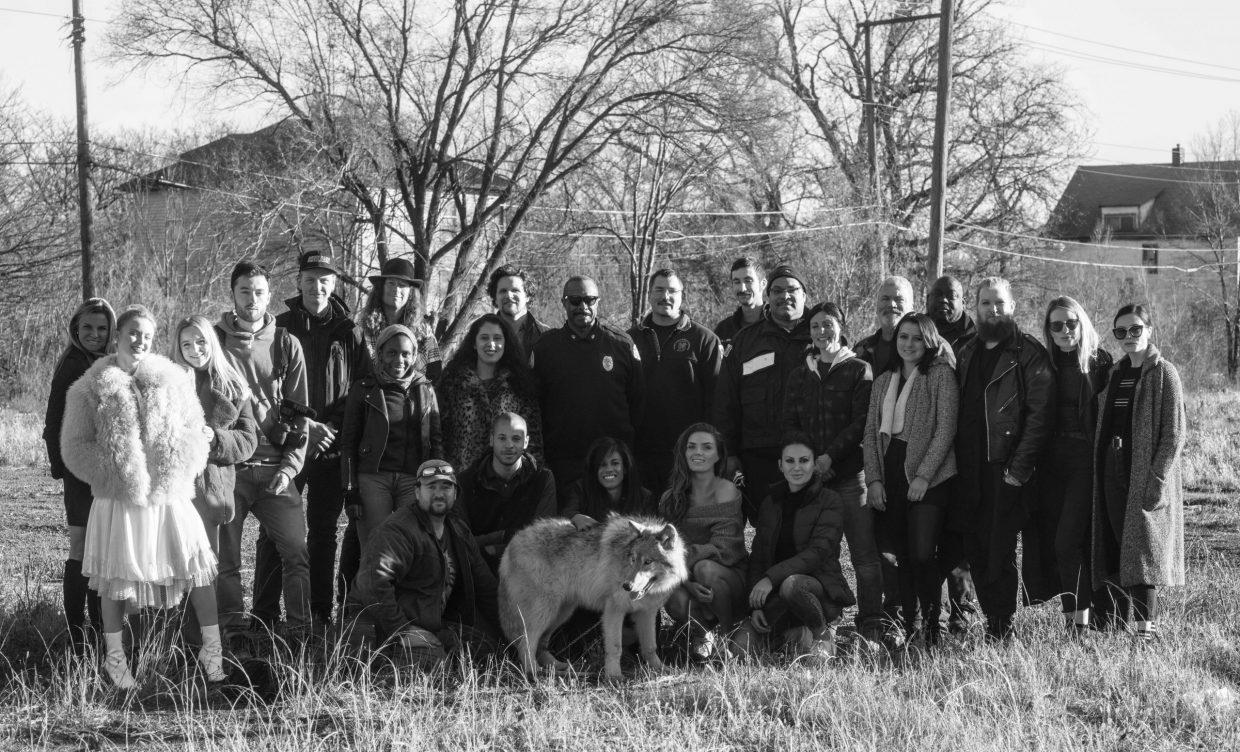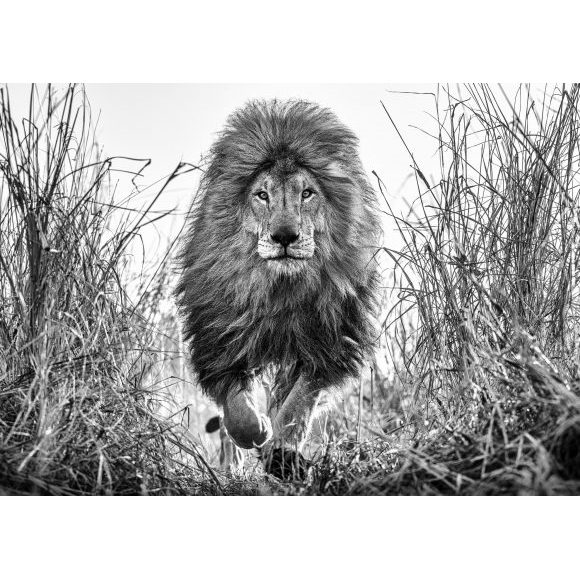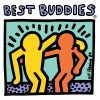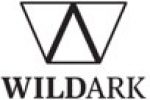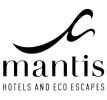Letter From Chicago
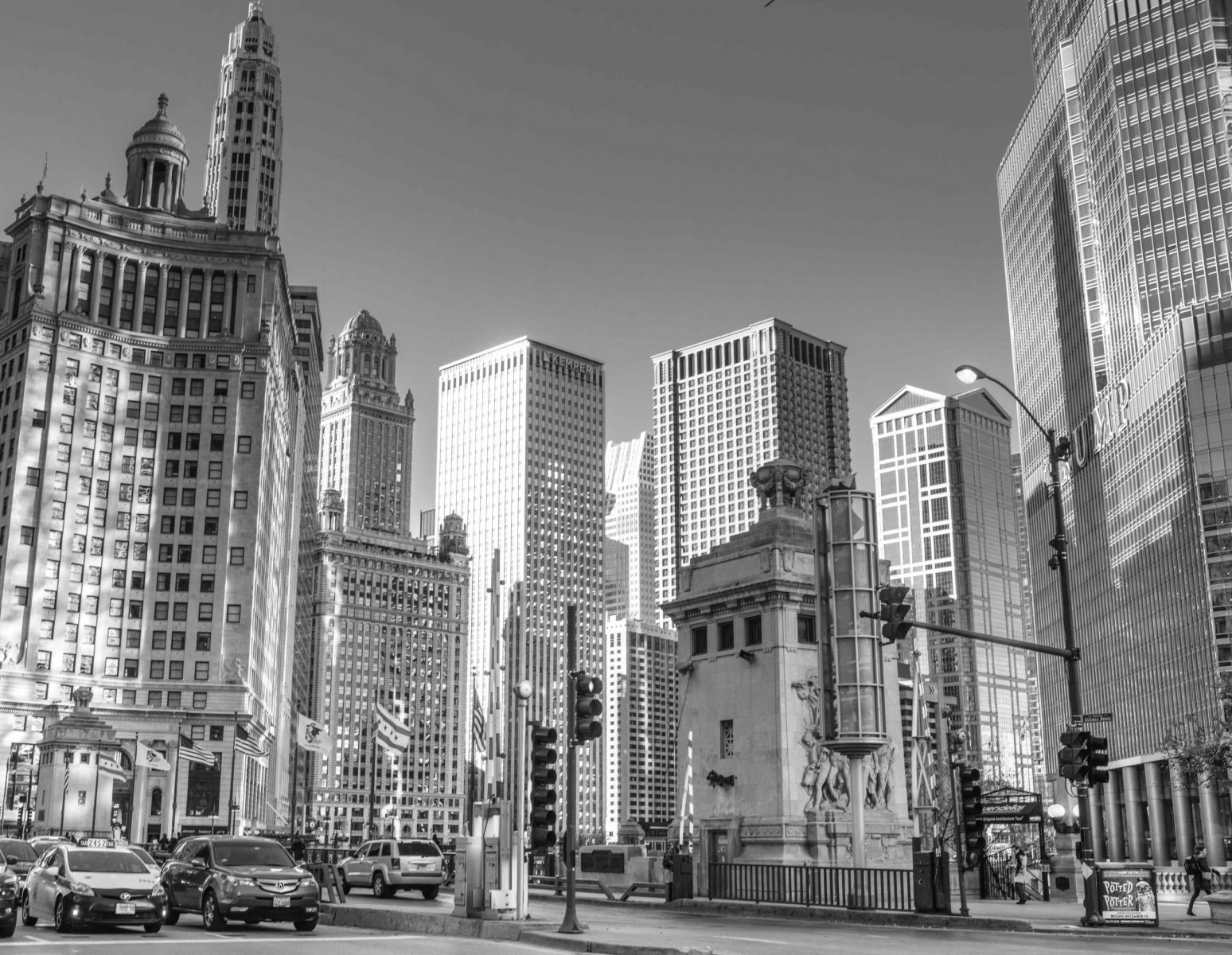
As I travel across America, I have become necessarily familiar with many storied cities and I am always reminded not just of the nation’s cultural diversity, but its strength in depth. By some distance, the United States has the largest number of outstanding metropolises of any country in the world. Each city is not simply a subservient constituent of the mother ship, they are all ring fenced, relevant, cultured and powerful communities in their own right.
When I am asked of my perception of a big US city, I am terrified of offering a lame and lazy platitude. New York deserves better than “it’s so energising”, just as Miami deserves better than “it’s so cool”. With Dallas, for instance, I find that it’s the genuine warmth of hospitality that differentiates the city, rather than the cowboys, the wealth and the oil. Meanwhile, LA simply keeps an artist on his or her toes – if you are not good enough, creative enough or hard working enough, the place will find you out. I regard Hollywood as meritocratic and demanding rather than shallow. The principle of getting relevant or useful or getting out of town, may be impersonal and soulless, but it certainly fosters healthy work ethic and personal introspection. LA nurtures and fuels ambition and I like that. It is good to be tough on yourself.
Chicago is a truly great American City. In 1850 it was just a muddy frontier town of barely 30,000 people, but by 1910 it had two million residents. These astonishing numbers empirically detail why, heading into the 20th century, Chicago was the fastest growing city in the western world. It was a classic metropolitan magnet that attracted anyone with ambition.
There is deep irony in that no city glamorised violence more than Chicago and no city’s reputation currently suffers more from the high crime rate. Al Capone and the Wise Guys were retrospectively accorded a celebrity status that will never be given to the current gangs of Inglewood. Last year in Chicago there were 762 homicides – the highest of any city in North America – and as a percentage of the population, 30 times the rate of London.
The statistics from the dangerous suburbs of Chicago can take attention away from a characteristic that has and always will define the city – its visually intoxicating architectural splendour. The great fire of 1871, offered city planners a chance to showcase – from the ground up – the bricks and mortar that accompanies the American dream.
Manifestly they seized the opportunity with great courage and pride and the result is the most bold and grand collection of high rises in the world. New Yorkers would disagree, but Chicago is a museum of historical architectural brilliance without equal. Manhattan’s grid structure around central park is compelling from a bird’s eye or penthouse view, but most of us neither fly nor live in a penthouse and its splendour is lost to those on their daily commute – there is not enough room to get perspective.
But not so in Chicago, where the post fire planning around the city’s eponymous river allowed for the perspective to be full frame as opposed to neck bending and vertical. Michigan Avenue truly is a “magnificent mile”- especially as it reaches the historic neo Gothic Chicago Tribune building. I have long been drawn to this spot by the riverbank and have dwelled on the right vantage point for a single photograph to do the place justice. In my mind, it offers the most sensational urban 360 degree view in the world – partly because the leading constituents in the drama were conceived generations ago. This is not Pudong, Shanghai – these office monoliths in Chicago stood tall over Al Capone’s mob 90 years ago. But the bigger the location, the harder it is for a photographer to do it justice – and it was always so.
The story of my audacious plan in Chicago began in early November when I was invited to the annual Chicago Police Department Foundation dinner as part of an intense schedule to coincide with the opening of my show in the city. I knew just one person in the room as it appeared that most of the 300 guests were connected to the Police Department and until that point I am proud to say, I had no familiarity with the institution.
It was a humbling evening and brought home the brutal reality of the dangers of being a police officer in the city. is was no place to be selfish, but I was tired enough to be exactly that and I rather longed for room service and a movie.
The obligatory post dinner auction offered the only moment of levity in a challenging evening and its commencement also suggested that the night was coming to a welcome conclusion. Energised, I looked at the lots, but sadly found little of interest. Two NFL tickets in a box at Soldier Field didn’t work, as I don’t live in Chicago and the Bears suck. A trophy fishing trip off Los Cabos didn’t cut it either, nor a back seat in a patrol car in Inglewood.
Both seemed to be trips that I would be unlikely to return home from.
But the last lot in the auction – the chance to have a private dinner with the Head of the Chicago Police Department – seemed much more unique. After all, this man has a job that makes Theresa May’s look like a picnic – she may get the odd cold and lose signage behind her speaking podium but each of his officers fire their weapons in the line of duty on average once every fortnight. That is a remarkable and deeply disturbing statistic.
I bid up and ultimately bid higher than others and ended up owning a ticket for dinner with Superintendent Eddie Johnson. And so it was that I wandered over to one of the more important men in Chicago and introduced myself as the winning bidder – I was, I said, “Scottish and earned a living taking pictures of elephants”. If he was totally underwhelmed by his forthcoming dinner date, he kindly didn’t show it and we wandered off to a corner of the room to have a quiet chat.
He was deeply relieved when I told him, I did not need to have dinner with him, but just a quick coffee later that week – at the gallery showing my work – at a time of his choice. My mind was already racing as to how I could use this opportunity.
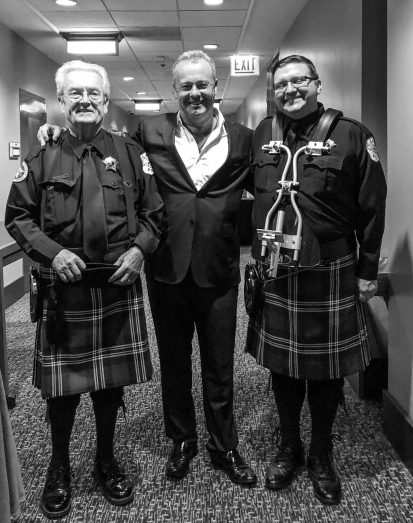
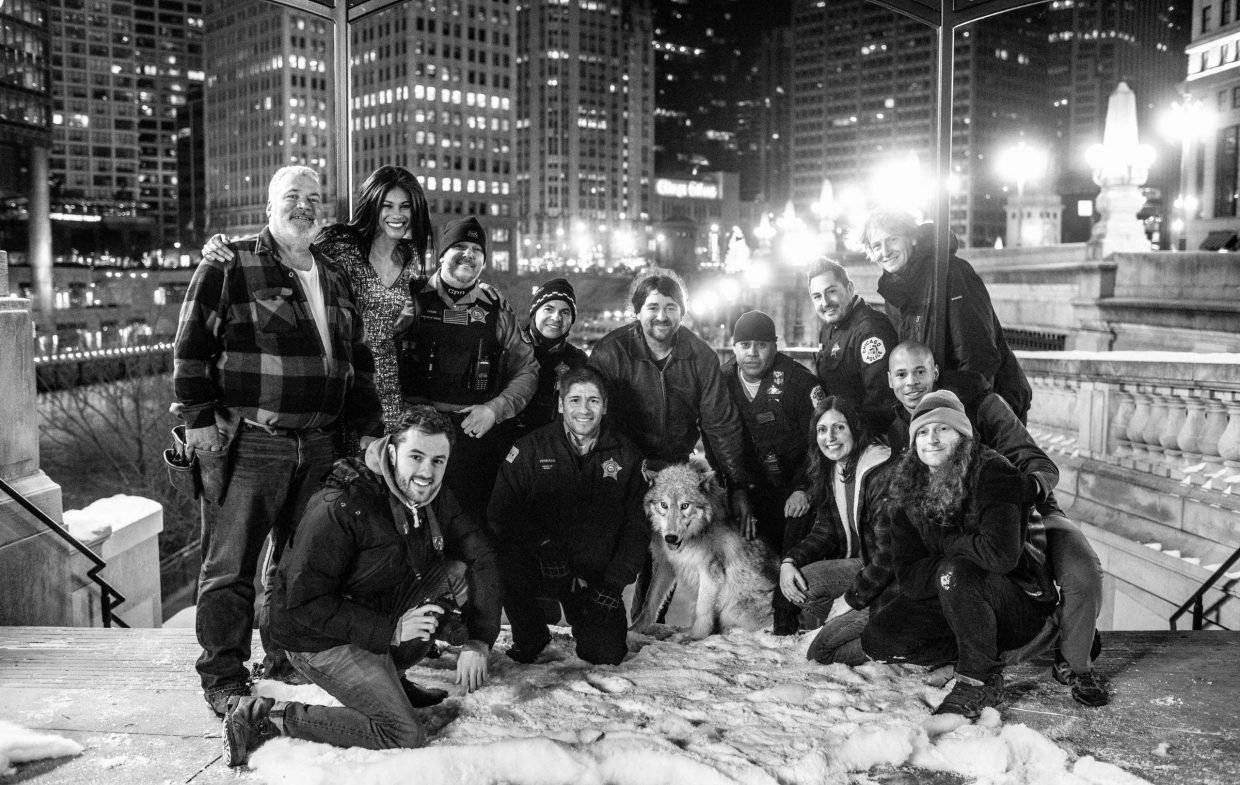
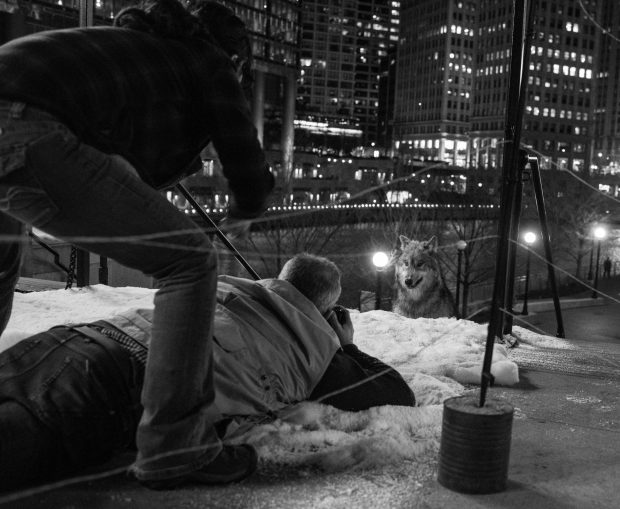
I left the Park Hyatt and wandered down to the Riverbank by the Chicago Tribune building and as I walked west, I saw the enormous Trump sign lit up on the north side of the river. I knew there was a photograph somewhere, I just had to find the angle. The sight of an out of towner in the autumn of the summer of his life, lying face down at midnight in his dinner jacket and making a view finder with his fingers was enough reason for intervention and perhaps an earlier than expected second meeting with the Chicago PD. After some time I found a position with a perspective that was so powerful, that my creative genes started to go into a midnight overdrive. I sensed an opportunity to play with metaphors and create a staged shot with animals.
When I met with Eddie later that week, I made a proposition. My idea was to take a photograph that glamourised Chicago and showcased its stunning architecture. I might make some snow and fly in some leading models for the foreground. If it sold, I would return some of the monies raised to the Chicago Police Department. But I was holding the key information back.
I explained that I would need the PD’s authorisation to close down some public areas around the river and then the help of his officers to maintain this exclusion zone. He took all this in and seemed enthusiastic, if somewhat puzzled, as to why I needed his support – after all the Chicago Film office is known to be positive in encouraging filming projects in the city. But the Superintendent clearly liked the idea of a good news story and so I felt it was the time to mention that I was also considering bringing some wolves into town. His reaction would go a long way to determining whether my creative concept was a runner.
"I knew there was a photograph somewhere, I just had to find the angle."
But Eddie has seen most things in his day job and most of them are skewed to the negative, so I sensed he rather enjoyed this canine curveball. He said he would do all he could to help, so long as I agreed to shoot after 11pm and he left with a laugh and a skip. I guess I could have asked for elephants instead.
Great photography more often than not has its platform in great access. The job of operating a camera is not the differentiating feature – a fluency in the languages of light, composition and focus are not going to win the day – they are a given. This is an era where “original content” has become such a household expression that the two words are orphaned without each other.
We required a challenging number of permits – a film permit, a permit to use police officers, a permit to close down the Riverwalk in Chicago and – of course – a permit to bring wolves into the heart of this historic city. Despite the support of the police, we were up against it time wise and then Thanksgiving got in the way. We had to put the wheels in motion long before we had approval from any of the necessary parties. That was a gamble we simply had to take. Ultimately it came down to a matter of hours.
The Chicago images will stand the test of time and we went to bed at 3 am with a sense of accomplishment. But three hours later we were up again and off to the tough and dangerous Indiana ghost town of Gary, where for some months we had planned to do some staged work in the Memorial Auditorium – a wonderful decaying building that Sinatra had sung in during his prime.
Music plays a big role in Gary’s history as it is the home of the Jackson family and the abandoned theatre on the main street hosted the Jackson 5 for many years. We entered the theatre with the help of the Gary Fire Department and what a treasure trove it is inside.
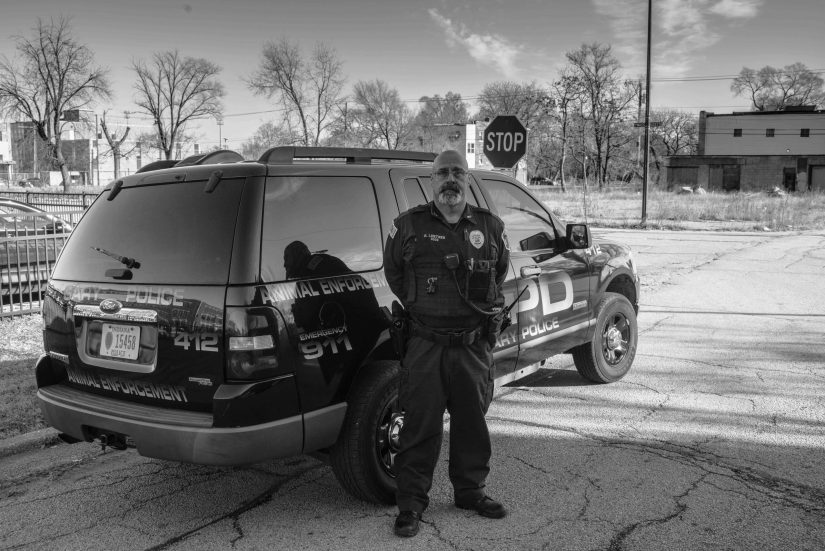
"Whole sections of the town have been abandoned and for a while it was the murder capital of America."
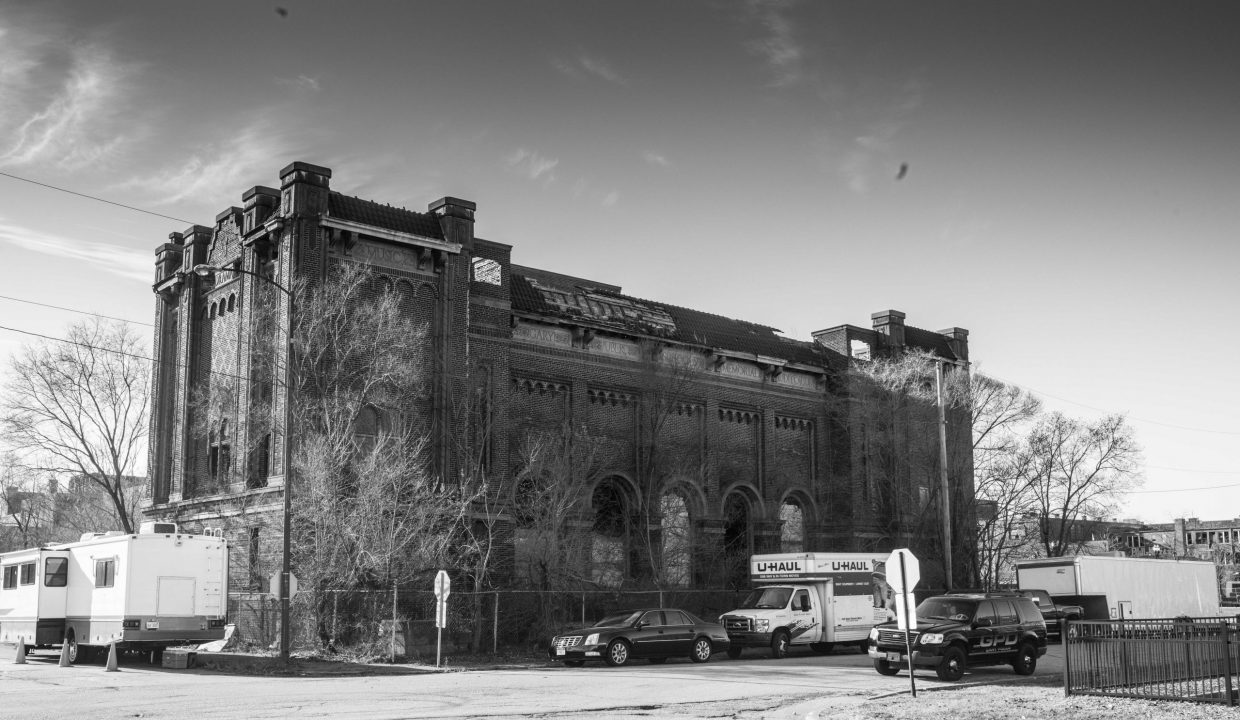

Sing us a song you're the piano man
Sing us a song tonight
We're all in the mood for a melody
And you've got us feelin' alight
Prior to the shoot, I visited Gary twice to check light and logistics. It is certainly the eeriest place I have even been to in the US. Whole sections of the town have been abandoned and for a while it was the murder capital of America. There are a number of squatters and junkies in the buildings and visitors have to be very careful. On my first visit I took a US marine with me, just in case. I have always found a visceral fascination with ghost towns and know only too well that decay makes for a great canvas on which to build stories.
In my staged work, I play by my own instincts and rules, but I am certainly influenced by the work of Tim Walker and David LaChapelle. There is no room for doing anything that is mundane and every possible boundary should be broken in order for the end visual to be as intoxicating as possible. These are not assignments where the creativity should be compromised.
We have a number of images from Gary – the three girls we used were all outstanding. Erica Lawrence – from New York, Zara Larsson – the teenage Swedish pop star – who is now one of the most streamed artists in the world and then my friend Kim Feenstra from Holland – one of the most adored and recognised models in Europe. It was a big crew and over the two long days everyone worked well together in a demanding and not entirely safe location.
One picture that I took in Gary stands out from all the others. Given Gary’s connection with the music industry, I thought it would be apt to bring a grand piano onto one of the sets – an easier thing to suggest than to pull off in an abandoned building in Indiana.
“It’s 9 o’clock on a Saturday” is as good and fun an image as I could have hoped to have taken that week. I may even send Billy Joel a copy – after all, “the regular crowd that is shuffling in” have no use for it.
